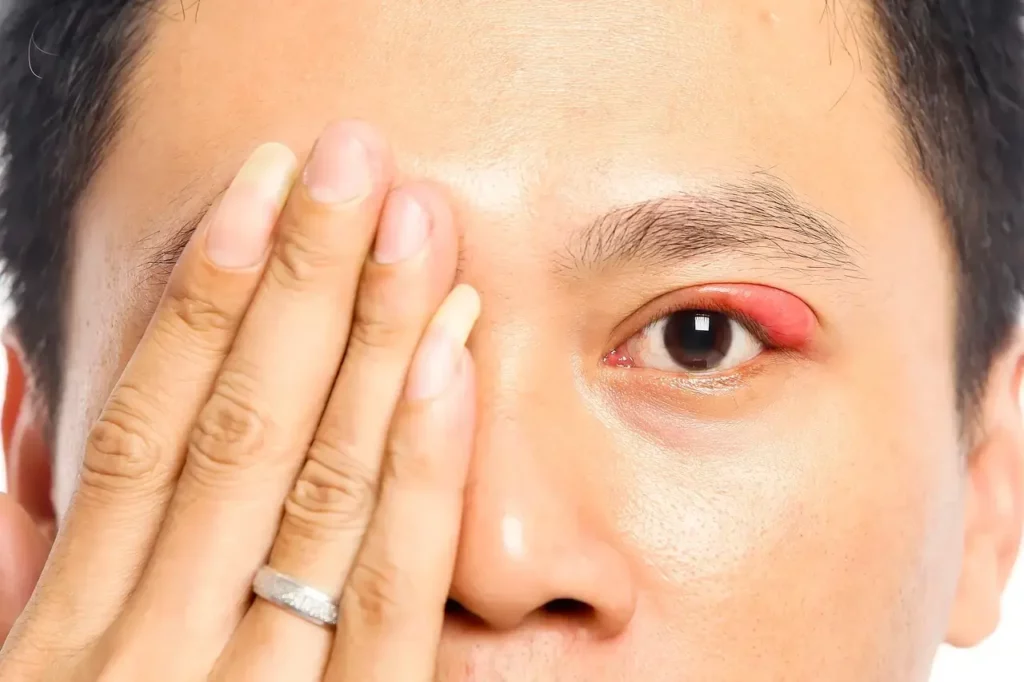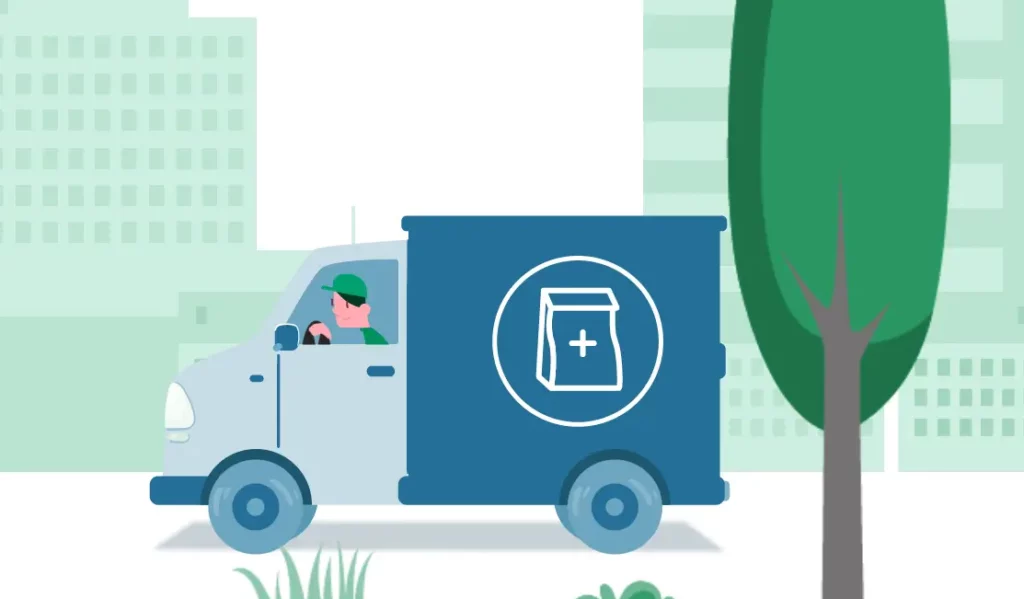A stye is a small, painful bump that forms on your eyelid, often near the base of an eyelash or within an oil gland. It’s caused by a bacterial infection, usually from bacteria commonly found on the skin or in the nose.
Styes are quite common and can affect anyone, regardless of age. They start as a red, swollen lump and may develop a pus-filled centre. Besides being uncomfortable, they can cause redness, irritation, and excessive tearing of the affected eye.
Without proper care, a stye can persist for several weeks, causing discomfort and potentially leading to complications. However, by carefully following our step-by-step guide, you can speed up the healing process and will typically see improvement within a week or two.
How to get rid of a stye
Step 1: Apply a warm compress
Take a clean washcloth and soak it in warm water. Gently wring out the excess water and place the warm compress over the closed eyelid with the stye. Hold it there for 10 to 15 minutes, allowing the warmth to penetrate the skin.
Repeat this process several times a day. The heat helps to increase blood flow to the area, promoting drainage and reducing swelling, which can expedite the healing process.
Step 2: Keep your eyelids clean
Keeping the affected eye clean is crucial for preventing further irritation and promoting healing. Use a mild, non-irritating soap or commercial eyelid cleanser to gently wash the eyelid and surrounding area. Use your fingertips to apply the cleanser in a gentle, circular motion, and then rinse thoroughly with lukewarm water.
Avoid rubbing or squeezing the stye, as this can worsen inflammation and spread the infection.
Step 3: Avoid makeup and contact lenses
While dealing with a stye, it’s best to avoid wearing makeup, especially eye makeup, as it can introduce bacteria and further irritate the eye.
Similarly, refrain from wearing contact lenses until the stye has completely healed. Contact lenses can trap bacteria against the eye and slow down the healing process. Opt for glasses instead, if necessary, until the stye has gone.
Step 4: Consider over-the-counter treatments
If recommended by your doctor or pharmacist, consider using over-the-counter antibiotic ointments or eye drops specifically designed for stye treatment.
These medications can help combat the bacterial infection causing the stye and reduce symptoms such as pain and redness.
Always follow the instructions provided on the product packaging and use them as directed.
Step 5: Don't pop it!
Resist the urge to pop or squeeze the stye, as this can lead to further infection, prolong the healing process, and potentially cause scarring. Allow the stye to heal naturally. Popping it can also spread bacteria to other areas of the eyelid or eye, increasing the risk of complications.
Instead, focus on promoting drainage and reducing inflammation through warm compresses and good hygiene.
Frequently asked questions about styes
How long does it take for a stye to go away?
Without proper care, a stye can persist for several weeks, causing discomfort. With treatment, it usually gets better in 1 to 2 weeks.
Can you pop a stye to get rid of it?
Popping a stye is not recommended as it can lead to further infection and complications. It’s best to let it heal naturally.
What are the best home remedies for treating a stye?
Effective home remedies for treating a stye include warm compresses, maintaining good eyelid hygiene, avoiding makeup and contact lenses, and using over-the-counter treatments like antibiotic ointments or eye drops.

